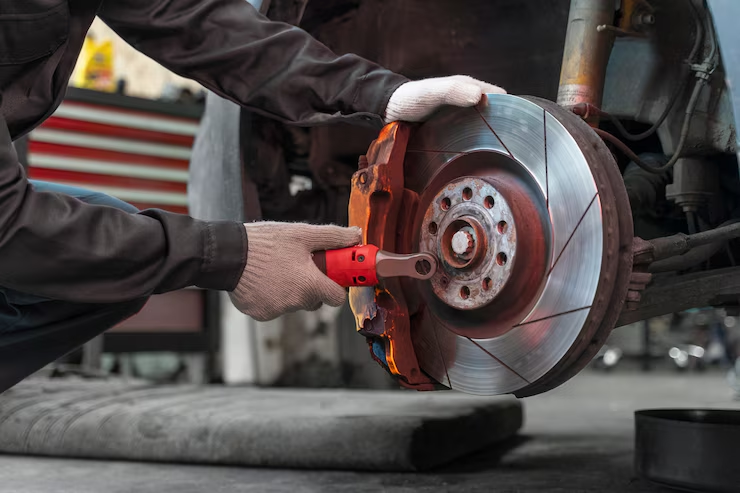
How To Remove Glue From Your Car + Must-Have Tools
Whether it's leftover adhesive from old stickers, debadgeing, or glue from body kit parts, that stubborn residue can actually damage your car's finish if left untreated. The good news is that removing glue residue doesn't require expensive professional help or harsh chemicals that might harm your paintwork.
With the right approach and a few basic tools, you can safely restore your car's surface to its former glory.
I've dealt with my fair share of sticky situations over the years, and I'll walk you through the most effective methods that won't leave you with bigger problems than you started with. But first, a quick look at why glue residue is so stubborn and why it’s important to get rid of it.
How To Remove Glue Residue? Step-by-Step Guide
To successfully remove glue and adhesive residue from your car, you have to be patient and work methodically. If you rush the process, you’ll end up scratching the paintwork or making the residue even more stubborn.
After some trial and error, I've found that the following steps provide a clean result without any damage to your car's finish.
1. Wash The Area

Before you try to remove the glue residue, give the affected area a thorough wash with warm, soapy water. This removes surface dirt and debris that could scratch your paintwork during the removal process.
Use a clean microfibre cloth or sponge, and make sure you rinse away all soap residue afterwards.
This initial cleaning also helps you see exactly what you're dealing with. Sometimes what looks like stubborn glue residue is actually just accumulated dirt around the edges of the adhesive, which comes off easily with a good wash.
2. Apply Heat To Glue Residue
Heat softens most adhesives, making them much easier to remove. A hair dryer works brilliantly for this. Hold it about 15cm away from the residue and apply heat for 30-60 seconds. The glue should start to soften and become more pliable.
On a warm sunny day, you might find that parking your car in direct sunlight for 10-15 minutes does the job naturally.
However, be careful not to overheat the area, as excessive heat can damage your car's paint.

3. Apply Glue Remover
Once the adhesive is warm and soft, it's time to apply your chosen glue removal solution.
Most glue removers are applied directly to the residue without dilution. However, make sure you check and follow the manual that comes with the glue remover you choose.
Apply the glue remover to the affected area and let it sit for 1-3 minutes. Here are a few things that you want to take care of:
-
If using a gel-based remover, apply a thin layer over the residue. For liquid glue removers, apply 4-6 sprays and make sure to cover the whole area.
-
Work in the shade. Glue removers evaporate quickly under direct sunlight.
-
Always wear gloves.
-
Use masking tape to mark the affected area and protect any plastic components.
Below are my top 3 glue removers that effectively remove all adhesive residue without causing any damage to the paint.

Best Glue Removers For Cars
-
Koch-Chemie Eulex Adhesive & Stain Remover - £16.54 for 1Litre
-
Infinity Wax Liquefy Tar & Glue Remover - £10.77 for 500ml
-
Duel BlackJack Tar & Glue Remover - £10.49 for 500ml
4. Carefully Scrape Off The Residue
After applying your chosen glue remover and letting it dwell for a few minutes, start gently scraping away the softened residue.
The key word here is "gently." You want to remove the glue without scratching your paintwork. Use your scraping tool at a shallow angle, almost parallel to the car's surface. Work slowly and reapply heat or remover as needed. If the residue isn't coming away easily, don't force it. Apply more product and give it more time to work.
Never use metal scrapers, kitchen knives, or abrasive pads on your car's paintwork. These will almost certainly cause scratches that are far more expensive to fix than the original adhesive residue problem. Below are some of the best scraping tools that I wholeheartedly endorse.
Best Tools For Effective Scraping
-
CAD Plastic Scraper Blades - £4.49 for 5 Scrapers + 1 Holder
-
Wonder Wheel - £11.49 for a 10cm Wheel

5. Polish The Area
Once you've successfully removed all the glue residue, you'll often notice that the treated area looks slightly different from the surrounding paintwork or may show minor microscratches from the removal process. This is completely normal and easily sorted with a bit of polishing compound.
Apply a small amount of soft to medium cutting compound to a clean microfibre cloth or dual-action machine polisher and work it into the affected and surrounding area. This will help blend the treated area with the surrounding paint and remove any fine scratches that may have occurred during the removal process.
Conclusion
With patience, the right products, and proper technique, you can get rid of even the most stubborn adhesive residue without damaging your car’s paintwork. Remember to work gently, test products in inconspicuous areas first, and don't rush the process.
You can save yourself a lot of time and trouble by catching these issues early. Fresh adhesive residue is always easier to remove than glue that's been baking in the sun for months.
Keep at least one bottle of a glue remover in your garage, and deal with sticky situations as soon as you notice them. Your car's finish will thank you for it, and you'll save yourself time and money in the long run. Happy detailing!
Related Articles
- Choosing a selection results in a full page refresh.
!







